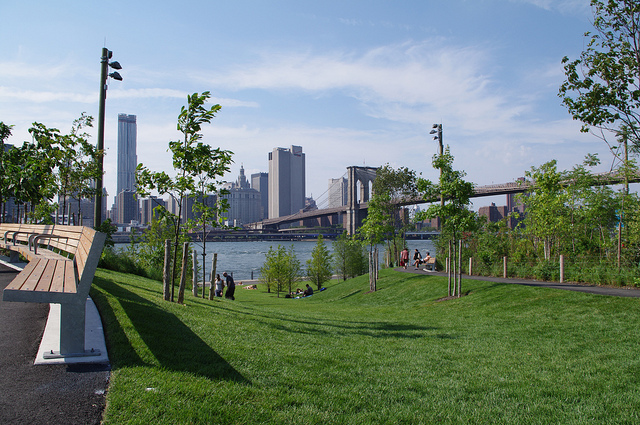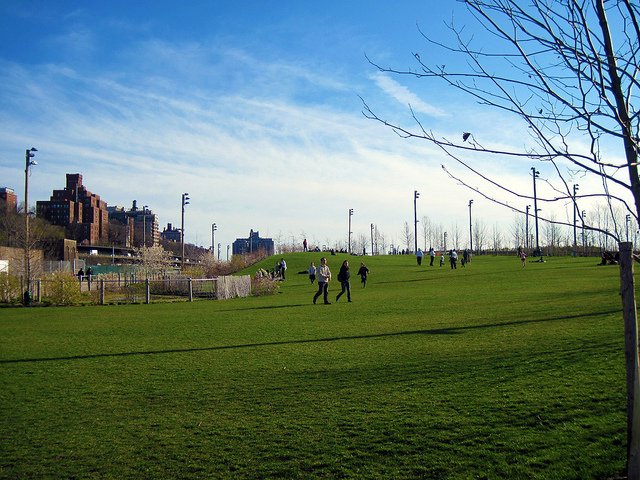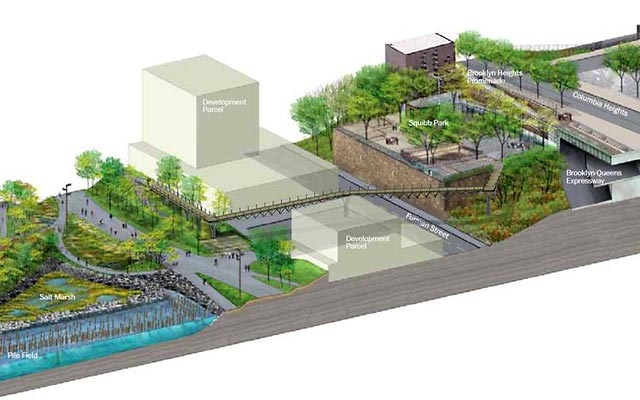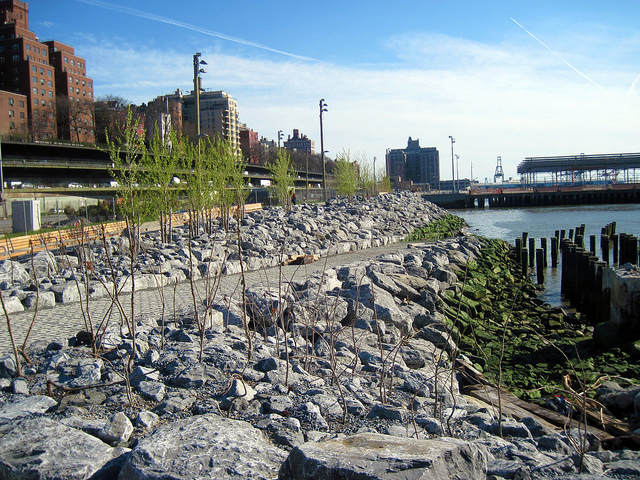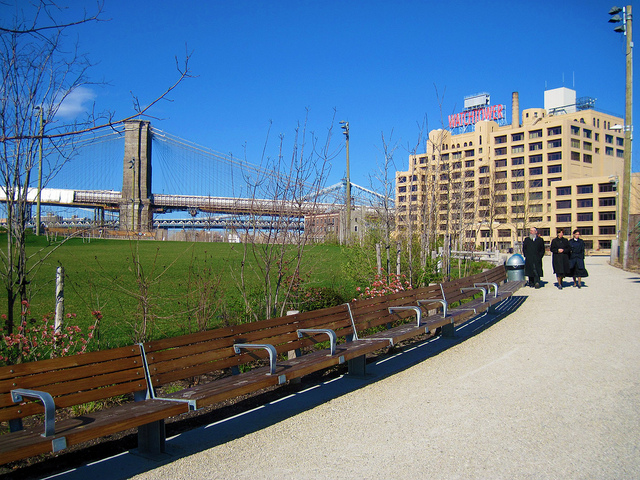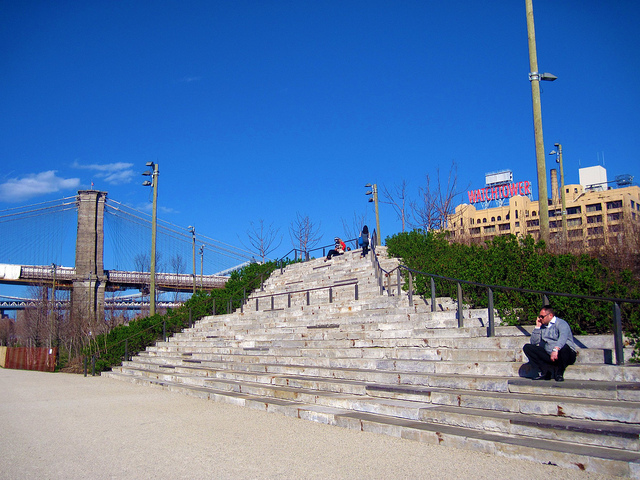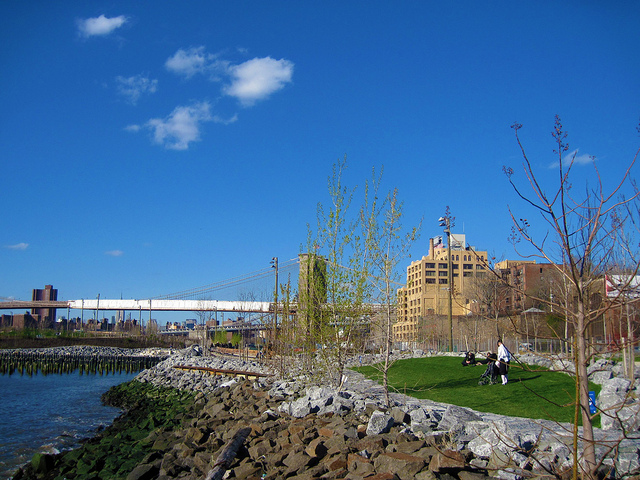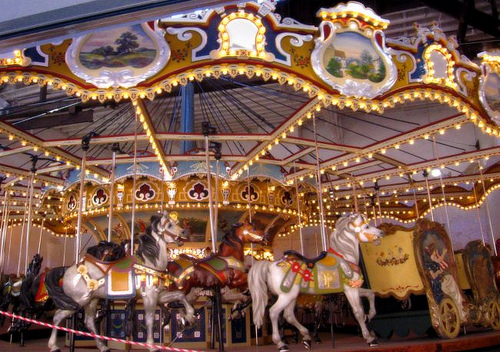Touring the Greenpoint Manufacturing and Design Center

The Greenpoint Manufacturing and Design Center’s (GMDC) flagship project is a 300,000 square foot complex of buildings built between 1868 and 1910 for the textile industry.
New York City is known as a leading destination for artists, and other creative professionals. I've often been curious where they maintain their businesses, given the high rents, and changes in zoning that have reduced the amount of manufacturing space that is available in the city. Recently, I visited the Greenpoint Manufacturing and Design Center (GMDC) at 1155-1205 Manhattan Avenue in Brooklyn. Founded in 1992, GMDC is New York’s premier nonprofit industrial developer. The organization manages a complex of five buildings, currently home to 100 businesses that employ 500 people.
The informative tour of the sprawling building complex was led by Cassandra Smith, a GMDC project manager. Historically, the Chelsea Fiber Mills began operations on the site in 1868, where marine rope was manufactured until after World War II. In its waning years of full-fledged production, the building was used for textile manufacturing.
The City took possession of the building in 1974, when the property went into tax foreclosure. Eventually, month-to-month tenancies were extended to an existing group of small manufacturers, and artists. In 1992, GMDC acquired the building from the city, which needed extensive repairs, due to deferred maintenance. Within a few years, the building was restored by utilizing public and private financing. As a result, GMDC preserved the architectural heritage of manufacturing buildings in Brooklyn, while creating new urban redevelopment opportunities in the borough.
GMDC fulfills a need, as industrial space becomes a scare commodity
New York City continues to attract a significant number of design professionals. In June, the Center for an Urban Future released a study, "Growth by Design," which documented some of the gains made in the city’s creative industries:
Between 2000 and 2009, design sector jobs in the New York metro area grew by 75 percent, with especially large jumps in the number of interior designers (which increased by 223 percent), graphic designers (139 percent) and industrial designers (127 percent). Overall 40,000 new jobs were added.
However, New York’s manufacturing sector overall has been less than prolific, as more than 64,000 jobs were lost, representing a decline of 46 percent. According to research conducted by the New York Industrial Retention Network,
23.4 million square feet of industrial space was lost to approved rezonings between 2001 and 2008, impacting some of New York’s most populated manufacturing districts. Significant portions of Greenpoint-Williamsburg, Long Island City, the midtown Garment Center, and Port Morris in the Bronx were rezoned during this period, mainly for residential development.
Although GMDC is located in a rapidly gentrifying community, it continues to be an invaluable resource because it provides quality, affordable space to a wide-range of creative professionals. The rent averages $12 to $15 per square foot, and tenants are given a vacant white box space to build-out to meet their specific business requirements. The GMDC is available exclusively for work-use, 24 hours a day, seven days a week.
During the tour, we visited several studio spaces. The tenants included:
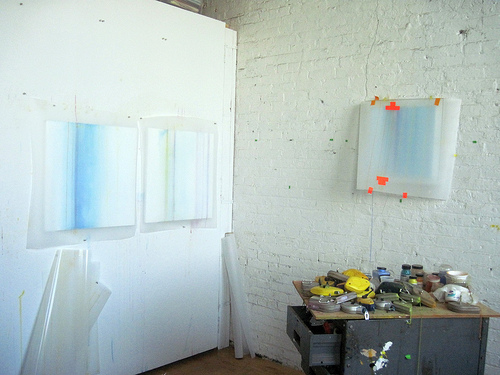
Barbara Campisi's studio at the GMDC
Barbara Campisi is a studio artist who has been in Greenpoint since 2004. She specializes in site specific installations, and her work incorporates many different and visual colors. Ms. Campisi has exhibited in the Fulton Ferry State Park, and has had pieces on display at IKEA in Red Hook.
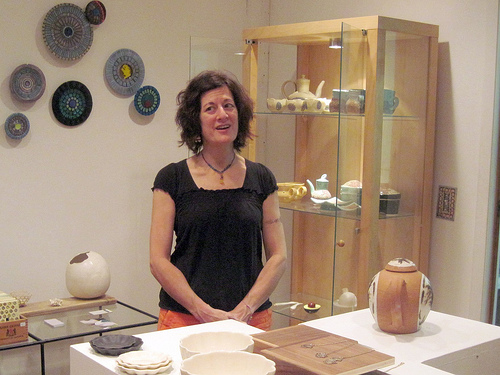
Janine Sopp in the Clay Space 1205 gallery
Janine Sopp was a textile and clothing designer, before she became a ceramics artist. She has been at GMDC for 17 years. Her work is sold nationally and internationally and is represented in craft galleries, museum shops, gift shops and Judaica stores across the country and online. Four year ago, Ms. Sopp decided to have other ceramics artists join her. She created a Clay Space 1205, with the belief that this art form centers on the strength of community. The 3,000 square foot space accommodates professional artists, and also offers classes to the public.
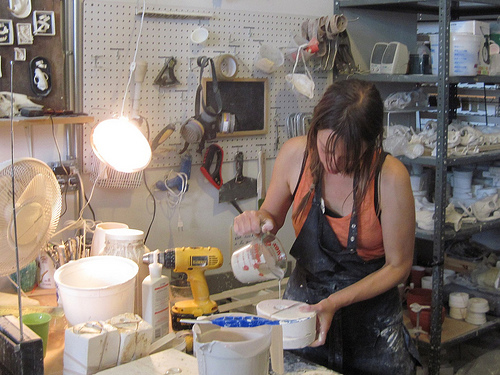
A Clay Space 1205 member at work
Clay Space 1205 has also serves as an informal business incubator program. "There are not a lot of places that allow you to start from scratch. Some people don't know how to get it off the ground, and start a business with it. Here, we are able to support each other’s businesses." Currently member artists come from a wide-variety of backgrounds and market to interior designers, and galleries. There is also an onsite gallery space that has rotating exhibitions.

Takeshi Miyakawa
Takeshi Miyakawa, a Japanese-born architect, has been furniture designer in Tribeca and Williamsburg for more than 10 years. He studied architecture in his native Japan, and previously worked in the construction business. After arriving in New York more than 20 years ago, he found a job in Williamsburg, where he specialized in custom design, and fabrication. Since 1992, he has worked as a model maker at Rafael Vinoly architects. He leased space at the GMDC after desiring additional work space for his practice, Takeshi Miyakawa Design.

Takeshi Miyakawa's studio.
 Ronnie Parsons (center) and Gil Akos (right) of Studio Mode/modeLab
Ronnie Parsons (center) and Gil Akos (right) of Studio Mode/modeLab
Ronnie Parsons and Gil Akos, are both architects and professors, as well as the owners of Studio Mode/modeLab. Currently they have a design studio, and research collective, and teach workshops around the world. They told the group that one of their most recent commissions was designing office space for a Mexican football stadium. They came to GMDC a few months ago, and their light-filled studio had exceptional views of Manhattan.
What’s next? The GMDC will soon expand to Harlem
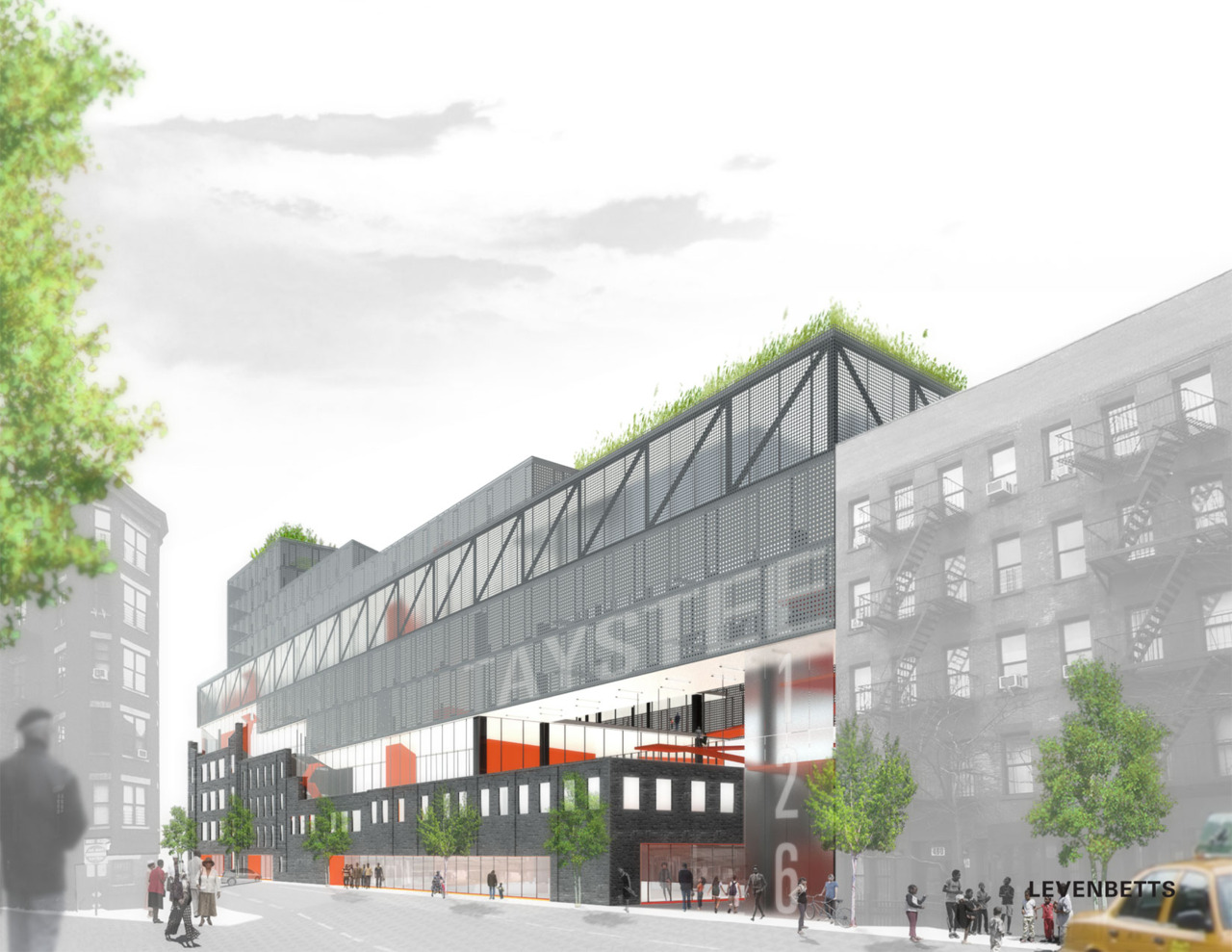
GMDC has been a recognized nonprofit leader in manufacturing development, and many city officials from across the nation have toured their facilities to see how they can grow an industrial base in their own communities. While GMDC has established a significant presence in Brooklyn, they are about to expand their reach to Manhattan. The New York City Economic Development Corporation (NYEDC) recently announced that GMDC will be one of the tenants leasing space in the new building, CREATE @ Harlem Green, a proposed $100 million development on 125th Street in Harlem.
NYCEDC selected Janus Partners LLC and Monandnock Construction, Inc. to redevelop the former Taystee Bakery complex into CREATE @ Harlem Green, providing additional commercial and industrial space to house tenants from creative industries. If the project is approved, GMDC will be operating 53,000 square feet of manufacturing space to be leased as 1,000-5,000-square-foot spaces for small manufacturing and artisan companies.
Brian T. Coleman, Chief Executive Officer, Greenpoint Manufacturing and Design Center stated, “We are excited about the prospect of bringing our expertise and brand to Harlem, and we look forward to working with Janus to tap the creative energies of Harlem’s artisans and small businesses. New York’s entrepreneurial millworkers, jewelry makers, metalworkers and graphic artists will benefit from a community where their businesses can grow and thrive.”
More information:
 Deena Parham | Comments Off |
Deena Parham | Comments Off | 